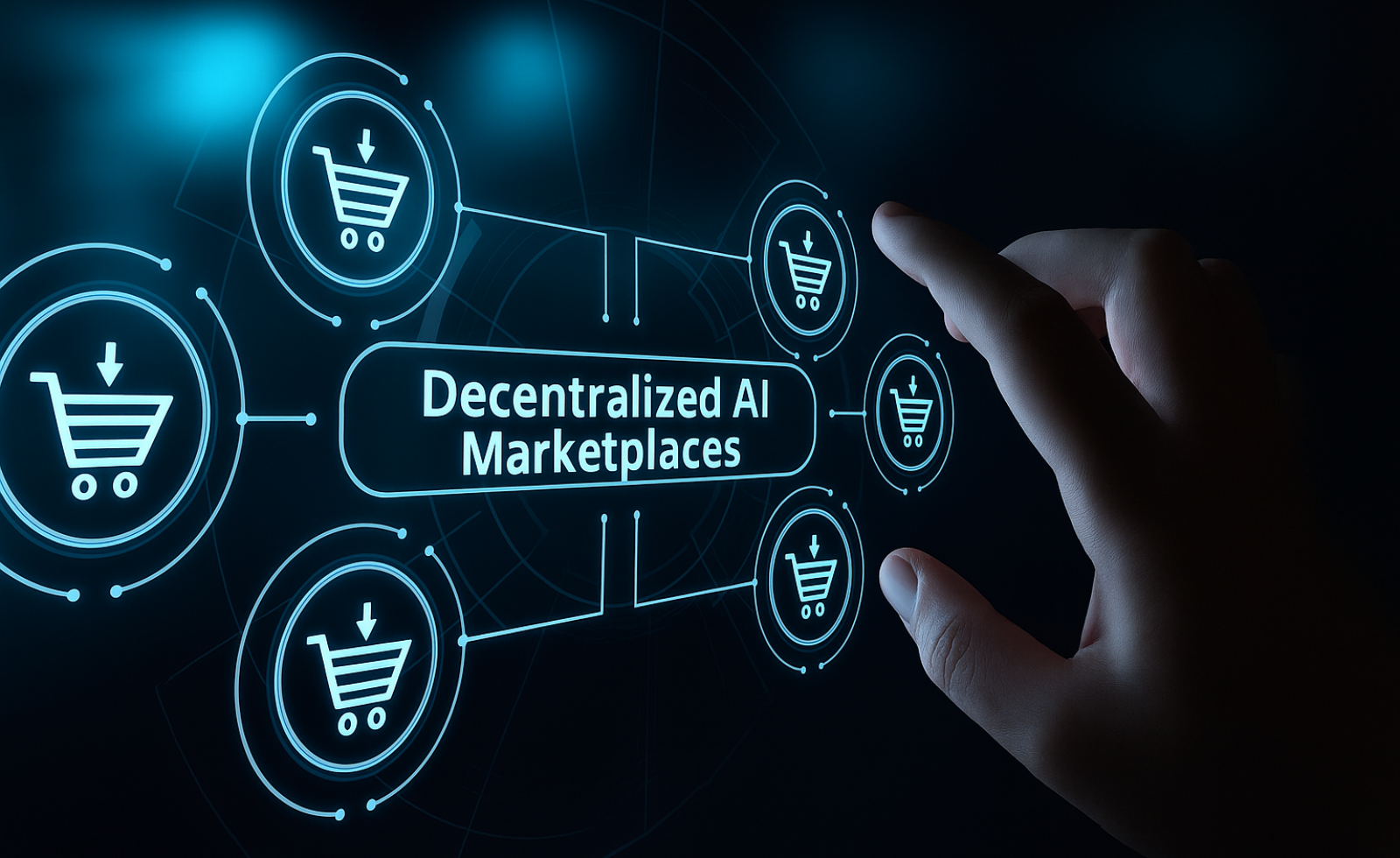Introduction: The Generative AI Explosion. What Happens After the Tool Phase?
In the span of just a few years, generative AI has made a remarkable leap, from obscure research to mass-market adoption. Platforms like ChatGPT, Midjourney, and GitHub Copilot have demonstrated the immense potential of AI systems that can write, draw, generate code, or synthesize video. Early adopters, from content creators to developers, rushed to embrace these tools for their creativity, convenience, and wow factor.
But as the dust settles, businesses are beginning to ask a deeper question: where does this go next? The “tool phase” brought awareness and experimentation, but integrating generative AI into real business operations is a different challenge entirely. It requires infrastructure, not just interfaces. As demand shifts from novelty to utility, companies need more robust ways to discover, deploy, and control generative models. Securely, affordably, and at scale. That’s where the marketplace model comes into play.
Why One-Size-Fits-All AI Is Losing Relevance for Businesses
At first, it made sense for generative AI platforms to focus on universal capabilities: write a poem, summarize a report, generate an image. But the broader and more diverse the business use case becomes, the less effective general-purpose models become. Companies in different industries, regions, and regulatory environments need outputs that reflect their language, workflows, and objectives, not generic content from a global model trained on public data.
This disconnect has created friction. Teams find themselves rewriting outputs, engineering complex prompts, or manually correcting results just to make these tools usable. Worse, centralized providers often restrict transparency, making it impossible to understand what data a model was trained on or how decisions are made. The “one-size-fits-all” approach leads to inefficiencies, blind spots, and growing concerns about bias, compliance, and competitive control. In response, businesses are beginning to seek AI that is purpose-built, not mass-produced.
Marketplaces as the Next Evolution: Decentralization Meets AI Curation
To bridge the gap between generic tools and tailored solutions, a new model is emerging: the AI marketplace. Much like app stores transformed how we discover software, marketplaces for generative AI allow businesses to browse, evaluate, and deploy models from a diverse set of creators. These platforms offer transparency in pricing, performance metrics, use-case alignment, and even community-driven ratings, helping users make better choices with less guesswork.
But marketplaces aren’t just about convenience. Many of them operate on decentralized infrastructure, which means they aren’t controlled by a single provider. This opens up access for independent developers and SMEs alike. Decentralized marketplaces reduce vendor lock-in, encourage innovation, and create a more competitive, transparent environment for both supply and demand. In short, they combine the efficiency of platform curation with the flexibility of an open ecosystem. Unlocking smarter adoption of generative AI across industries.
The Role of Custom Fine-Tuning and Local Model Deployment
One of the key advantages of generative AI marketplaces is the ability to offer fine-tuned and locally deployed models. Instead of forcing every business to adapt to a global model’s quirks, marketplaces allow companies to find or request models that are specifically trained for their region, language, or sector. A chatbot trained for e-commerce in Jakarta will respond very differently from one trained for legal inquiries in Frankfurt, and that difference matters when customers are on the line.
In addition, decentralized marketplaces often support private deployment or on-premise hosting. This gives businesses the flexibility to run models within their own infrastructure, ensuring full control over data, compliance with regulations, and tighter integration into existing systems. Fine-tuning combined with local deployment offers the best of both worlds: AI that understands your context, and architecture that respects your boundaries.
Tokenized Access: Aligning Incentives in AI Discovery
Traditional AI tools offer little in the way of user or developer participation. The platform decides which features to build, how much to charge, and what changes get made. Tokenized marketplaces flip that model. By introducing blockchain-based tokens into the ecosystem, marketplaces create an incentive structure that rewards every participant. Model creators, reviewers, users, and infrastructure providers.
Tokens can be used to access premium models, vote on platform upgrades, or reduce usage fees. Creators earn tokens as their models are adopted, while businesses can stake tokens to gain influence over the marketplace’s direction. This structure aligns interests across the board. Instead of being passive consumers of AI, users become stakeholders in how AI is shaped, governed, and scaled.
Benefits for SMEs: Lower Cost, More Control, and Faster ROI
For small and mid-sized businesses, the advantages of generative AI marketplaces are especially compelling. First, marketplaces reduce cost by breaking away from expensive licensing models and offering usage-based pricing. Instead of subscribing to a one-size-fits-all platform, SMEs can choose models that match their budget, scale, and priorities.
Second, marketplaces put control back in the hands of users. SMEs can compare competing models, test them before committing, and switch without penalty. This level of autonomy is rare in traditional software models, where switching costs and technical barriers are high. And finally, marketplaces accelerate ROI. By providing targeted, plug-and-play AI options, they enable SMEs to experiment and deploy quickly, without needing in-house data scientists or complex integrations.
Case Examples: How Sector-Specific Models Are Already Winning
The shift toward curated, domain-specific AI is already showing results. In the healthcare industry, for instance, AI models trained specifically on clinical trial documentation are outperforming general models in accuracy and relevance. Legal firms are deploying customized summarization tools that understand jurisdictional context and precedent formatting. Even creative fields are seeing value: AI copywriters trained on localized tone and brand voice are producing content that converts better than generic outputs.
Across industries, the pattern is clear: businesses that adopt purpose-built, sector-specific models get better results, faster integration, and greater confidence in output. Marketplaces are accelerating this trend by connecting these models with the companies that need them most, without friction or unnecessary intermediaries.
MWX Platform: Where Generative AI Becomes Business Infrastructure
MWX Platform is leading this evolution by building a decentralized AI marketplace tailored for real-world business adoption. It combines the openness of a curated model ecosystem with the reliability of decentralized infrastructure. Through MWXT tokens, users can access models, stake in governance, and participate in the platform’s growth.
Unlike traditional AI providers, MWX gives businesses full control over how they discover, test, and deploy generative models. Whether an SME needs a plug-and-play content generator or a localized compliance agent, the platform offers tools that are accessible, scalable, and aligned with real business needs. MWX doesn’t just offer AI. It offers infrastructure that businesses can build on, invest in, and trust for the long term.




